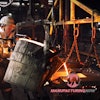When it comes to the value of our business's brands, I think it's safe to say the majority of us do our best to create a distinct impression of quality, and cross our fingers that the gods of intangibility are smiling down on us. Those of us without an MBA in marketing, anyway.
Apparently there's more to it than just that — and Brand Finance wants to tell you just how strongly you're being outmatched.
Brand Finance is a brand valuation consultancy, and one of the first companies in the world to be accredited to provide ISO 10668 compliant brand valuations. In the recently released Brand Finance US 500 — the first and only study of its kind, says the agency — Brand Finance has put all of America’s listed companies to the test to determine how much their brands are really worth. The top 500 most valuable brands make the list, all of them able to claim membership of the ‘billion dollar brands club’.
Brand Finance calculates brand value by determining the royalties a corporation would have to pay to license its brand if it did not own it, known as the ‘royalty relief’ method. As well as a brand value, each of the 500 brands in the group is accorded a brand rating; a benchmark of the strength, risk and potential of a brand relative to its competitors, expressed as a letter code from AAA+ to D, similar to a credit rating.
According to the study, of the 15,000+ listed companies in the U.S., only 519 are billion dollar brands. The total value of these big dogs is a staggering $2.5 trillion.
No surprise, Apple is reportedly the first and only brand to be valued at over $100 billion, and has been crowned the world’s most valuable for 3 consecutive years.
ALSO READ: Auto Brands And The Value Of Toyota
The tech sector, likewise, is the most valuable sector in the Brand Finance US 500, making up 23 percent of the total. The 52 tech brands assessed collectively generate over $550 billion of brand value and include big timers like Google ($69B), Intel ($23B), Oracle ($21B), HP ($20B), Ebay ($13B), and Facebook ($10B). "With no notable losers," says the report, "the technology sector will continue to be the primary generator of brand value in the foreseeable future."
However, it goes on to say that the success of technology brands comes at the expense of ‘real world’ brands:
"Retail is the latest sector to fall victim to technology with Walmart ($44.8B), once America’s most valuable brand, being overtaken by Amazon ($45.1B). Walmart has struggled to keep up with Amazon’s range and speed of delivery, providing customers with a simpler way to buy goods that would otherwise draw shoppers to Walmart’s ‘Supercenters’. As a result, Amazon grew 23 percent whilst Walmart staggers behind at 6 percent."
So, what exactly are we getting at here? All of this makes for an interesting read, but it feels a bit like sitting in a grandstand watching billionaires race performance cars. Obviously someone will win, but what's a trophy to Sir Richard Branson? Why should we care? According to David Haigh, CEO, Brand Finance: “Warren Buffett is well known for investing in heavily branded businesses such as Citi, Coca-Cola and Heinz."
Okay, so Warren Buffett may have a "type," but its also not uncommon for big league investors to put their money into emerging and potentially disruptive technologies. The Brand Finance Report puts Tesla at the bottom of the heap in terms of brand value, yet the company was still the top performer on the Nasdaq 100 index in 2013. And there's been no shortage of companies who are willing to pony up cash for the next best thing — no matter what shape or form it takes.
But for those of us who aren't competing for venture capital from billionaires, I think the biggest takeaway comes from Edgar Baum, Managing Director, Brand Finance North America, who suggests that the report raises a question as to whether CEOs, Boards, and their executive teams understand the role their brand plays in driving long term success for their business. "The stronger the brand the more resilient a company is to adverse market conditions and the more likely that the company is able to sustain its business through thick and thin.”






















